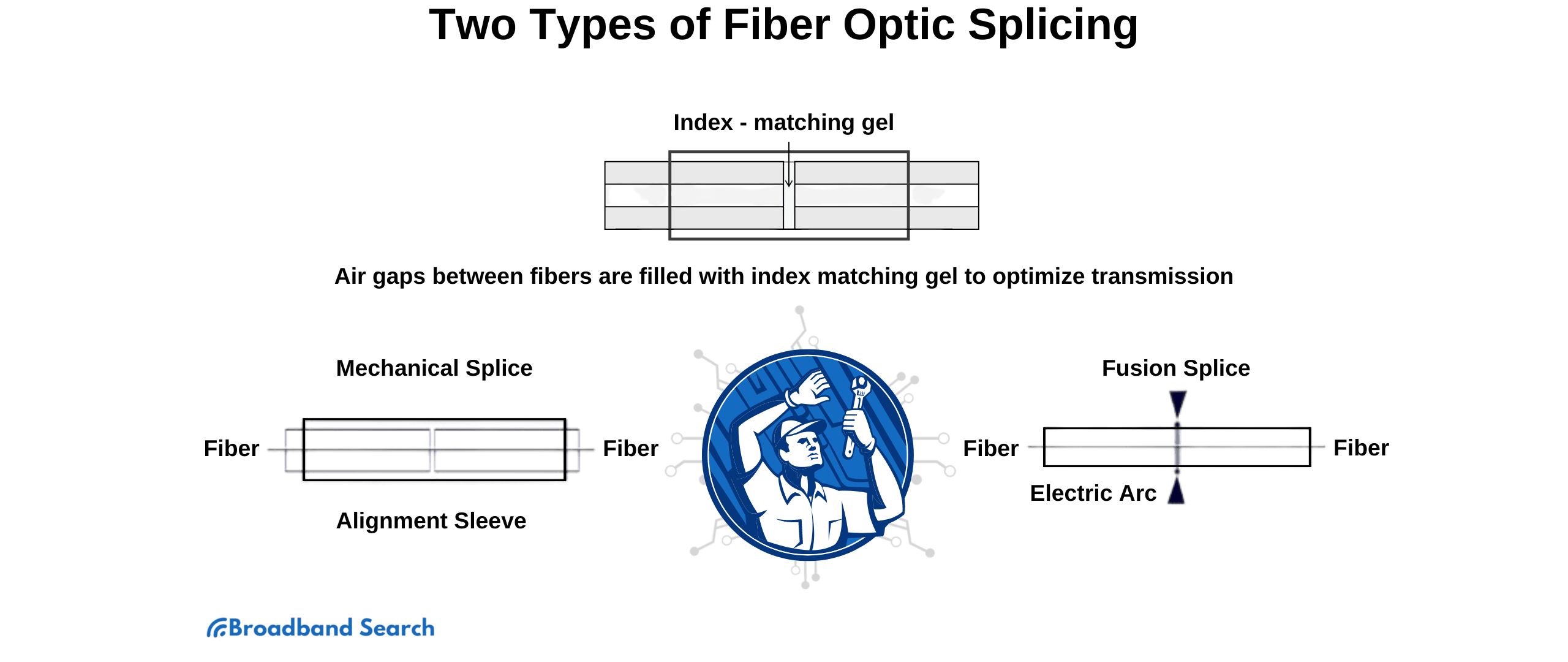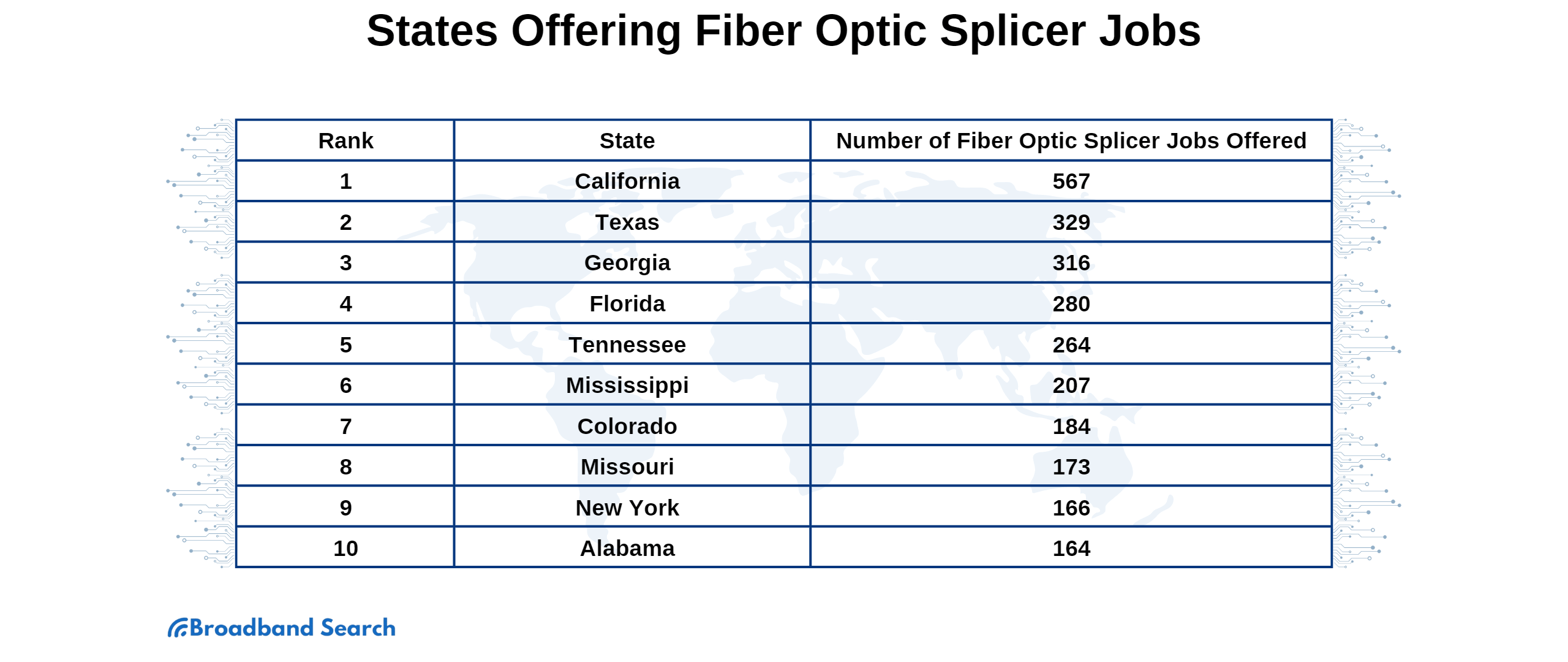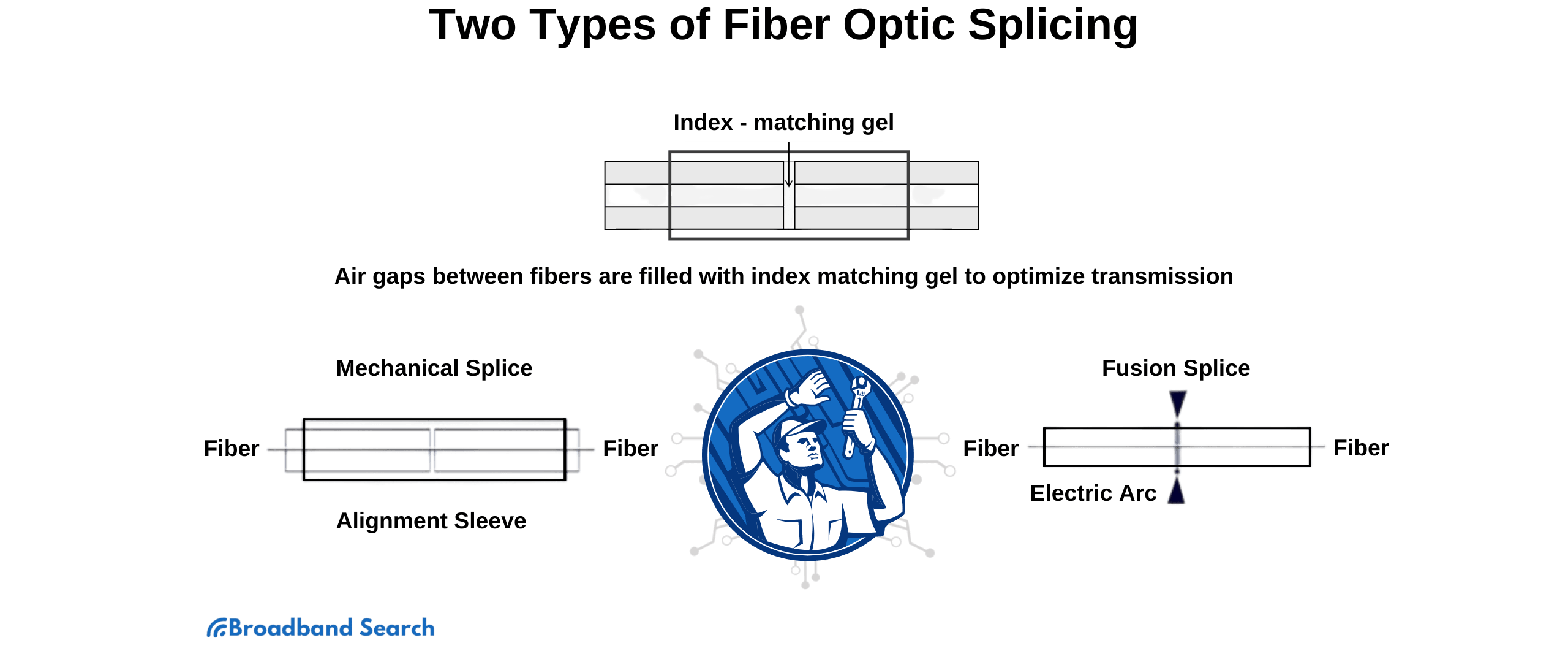The fact that there is a dedicated role as a fiber optic splicer today is a symbol for the future of communications. It shows the importance of communications technology in our lives and indicates how this type of technology will continue to be an integral part of our lives in the future too. The fiber optic splicer role is also one of the most sought-after roles in the industry, which proves its significance in the modern world of the internet.
So, since the role has become so important, we thought we’d go over some of the details of fiber optic splicers to help you improve your understanding of the role, how your skills might apply to the job, and how those skills can help to improve the world of communications as a whole.
Understanding the Word “Splice”
First, we need to look at the word “splice” because you can’t understand what a fiber optic splicer is doing if you don’t know what the word even means. To put it simply, when you “splice” something, it means that you are joining the ends of two “things” to make them one “thing.” So, in the case of fiber optic splicing, you are essentially joining the ends of two fiber optics cables together to make one cable.
Splicing can be done to join cables that aren’t long enough to reach a certain distance or have been damaged somehow. It can also be done to join different fiber optic cables, such as a 48-fiber cable to four 12-fiber cables.

Understanding the Role of a Fiber Optic Splicer
Now that you know what “splice” means, we can understand what a fiber optic splicer does. And we’re sure you’ve guessed it by now - a fiber optic splicer joins fiber optic cables. They do this through modern telecom technology that joins the flexible glass strands within the cables, allowing light to travel through the strands without any issues. But that’s not the only role of a fiber optic splicer, so let’s look at what else they do.
What Does a Fiber Optic Splicer Do
Knowing all the responsibilities of a fiber optic splicer is important because it’s more complicated than simply going to locations and joining two cables together.
If you were to become a fiber optic splicer, you’d have to use and maintain both single and mass fusion fiber optic splicing machines. You’d also have to be able to operate different types of testing equipment, including an optical time-domain reflectometer (OTDR), an intelligent optical link mapper (IOLM), and more.
In addition to these responsibilities, you’d need to:
- Install different connector types, such as an MT-RJ, SC, or LC, at various FBI locations.
- Be able to run, splice, terminate, and troubleshoot cat-5, cat-6, and coax cables.
- Practice locating, installing, and testing DSL, VRAD, VoIP, REGEN, and wireless equipment.
- Test T1s, T3s, DS1s, DS3s, carrier access channel banks, and D4 channel banks.
How Much Does a Fiber Optic Splicer Make
In America, the average yearly wage of a fiber optic splicer is $44,077 (which is $21 per hour). But the top 10% of earners in this role earn over $67,000 annually, and the bottom 10% earn less than $28,000 annually, so it can vary quite a lot depending on things like experience, the company’s budget, etc.
Why Fiber Optic Splicers are in High Demand
Technicians who can become fiber optic splicers are in high demand in the US, especially as fiber optic internet infrastructure grows. As a result, the job often comes with a number of different benefits. Some of these include on-the-job training, education, and certification opportunities that will help with career growth, good wages, the ability to be on the frontlines in the transition to fiber-optic communications, and anything else the company wants to add on.

How to Become a Fiber Optic Splicer
Fiber optic splicers must adhere to productivity requirements as they assemble, splice, and polish fiber optic terminators. Here are some of the things that you will need if you want to get a job in this profession:
Fiber Optic Splicer Education
Some fiber optic splicers have a bachelor’s or even a master’s degree, but it’s not necessarily needed for the role (although it does make getting the job more competitive). Many fiber optic splicers out there have their high school degrees and did not go to college, so you don’t need to worry as much about tertiary education with this job. However, it might help your chances of being hired or getting a better salary.
Fiber Optic Skills
Of course, you will still need the necessary skills before applying for the job. Below is a list of the skills you will need and the tools and equipment you must know how to use if you want to become a fiber splicer:
- Must be able to use hand tools.
- Should be able to use ladders.
- Must know how to use an optical time-domain reflectometer (OTDR).
- Can handle fiber optics cables and understand the basics of how they work.
- Understand and can work with power meters.
- Can operate a bucket truck.
- Understand what an OSP is and can work on the OSP lines.
- Understand color coding and can do it yourself.
- Can use test equipment.
- Understand OSHA requirements that need to be followed.
- Know all the safety standards for the industry and role.
- Have experience in fusing loose tube single fibers and other fusion splicing experience and knowledge.
- Have experience in telecommunication.
- Understand broadband technology.
- Can work with CATV systems.
Relevant Training/Internship
Like any technical career, you’ll need some training or internship to become a fiber optic splicer. Usually, training procedures take anywhere from 6-12 months to be completed. However, there are cases where fiber optics splicers have acquired the necessary skills to be employed in as little as a month! The length of time it can take could depend on the training program, the requirements the company is looking for, or your existing knowledge prior to the training program.
Conclusion
As we advance fiber optic internet and grow the infrastructure that gives everyone fiber internet access, fiber optic splicers will become more and more critical. If the growth of fiber over the last few years is anything to go by (which we think it is), fiber optic splicing is undoubtedly a career to look into. While you may not need a bachelor's or master’s degree, you will still need several other technical skills before getting the job - and even before training - if you want a good chance of being hired. So, if you’ve decided that you are going to go for this profession, we just want to say good luck out there and happy splicing!
FAQ
Can anybody install fiber optics?
Whether or not you can install fiber optics yourself ultimately depends on the infrastructure in your area already. If there is already a fiber cable going to your building or home, it might be possible for self-installation, but it can be a delicate process, and you should have a general understanding of what you’re doing. If fiber cables have not been laid yet, a professional will likely need to come and install fiber for you because this requires the ground to be dug up to lay the fiber cables.
Is fiber optic certification worth it?
If you are pursuing a career in telecommunications or fiber optics, getting a certification in fiber optics is certainly worth it. The technology is expanding rapidly, so employees with a strong understanding of fiber optics and the ability to work with this technology are in high demand.
How much does a fiber splicer make in Canada?
The average salary of a fiber splicer in Canada is around $58,000 per annum. Of course, this can vary depending on your experience, the competitive job market, and the company offering the job.
Is fiber optic splicing a good career?
With a good salary and fiber optic splicers in high demand, it can be considered a good career. In addition, fiber technology is only growing, so it’s very likely that the job will continue to be in demand for quite some time.
Can I run my own fiber optic cable splicing business?
Yes, you can run your own fiber optic cable splicing business. If you have the right experience, the capital to start the business, and a plan of action to get a good number of clients to turn a profit, then it might just be a good idea.

